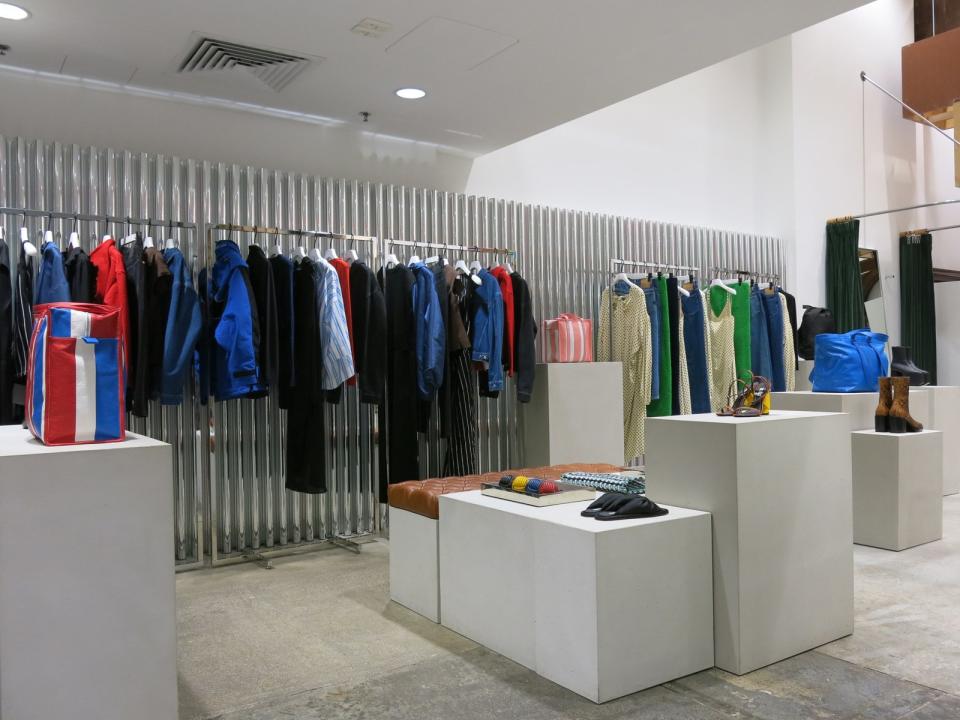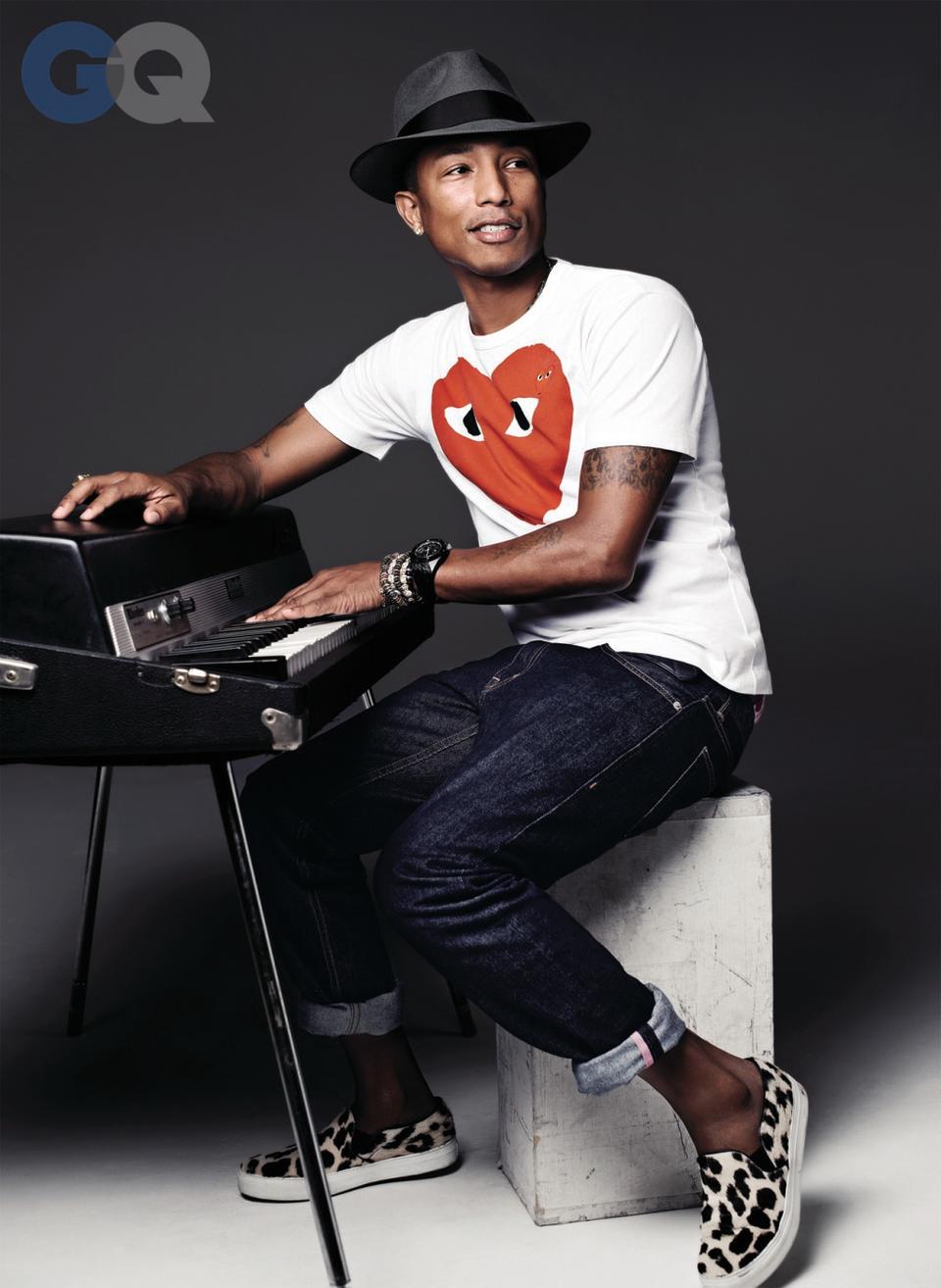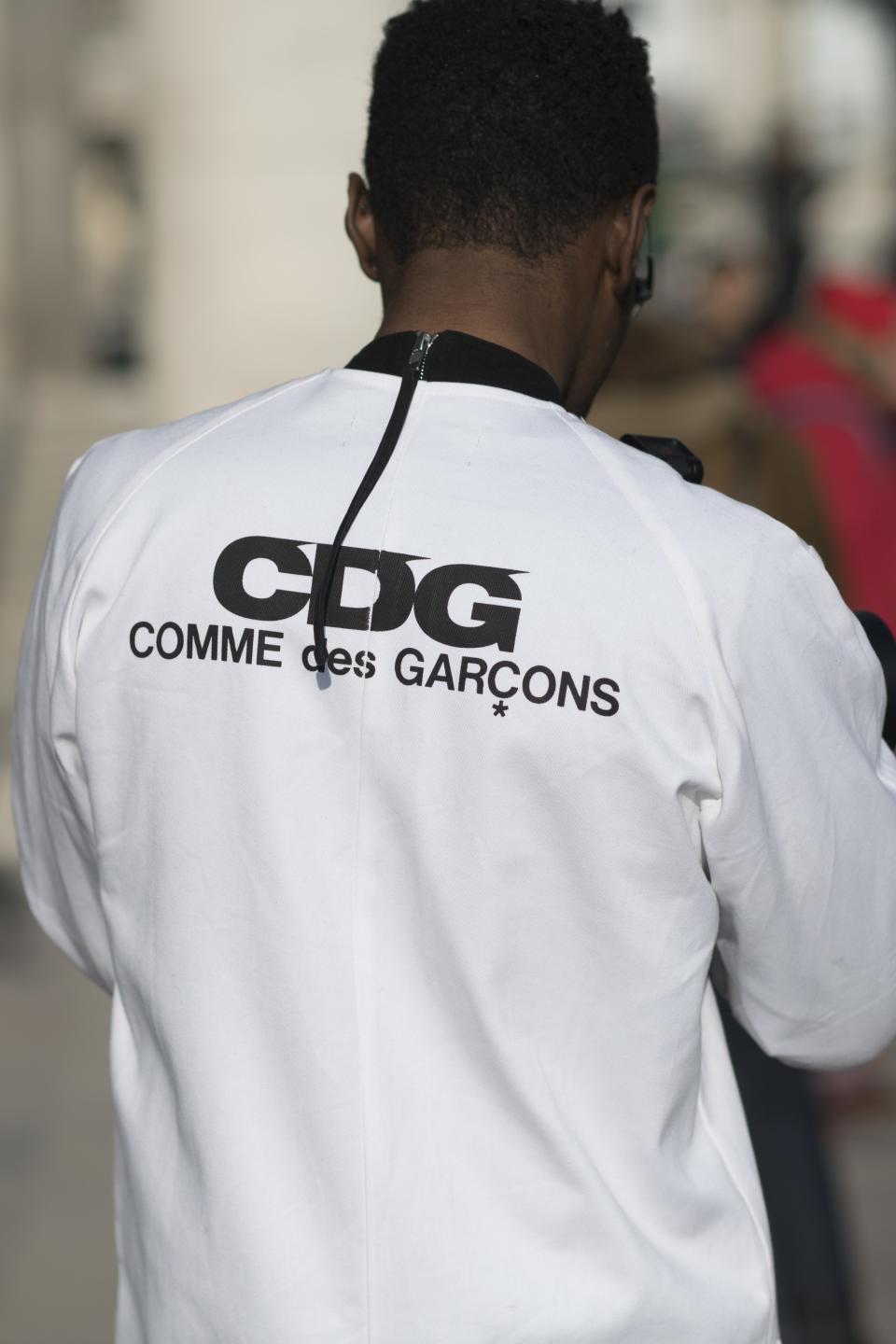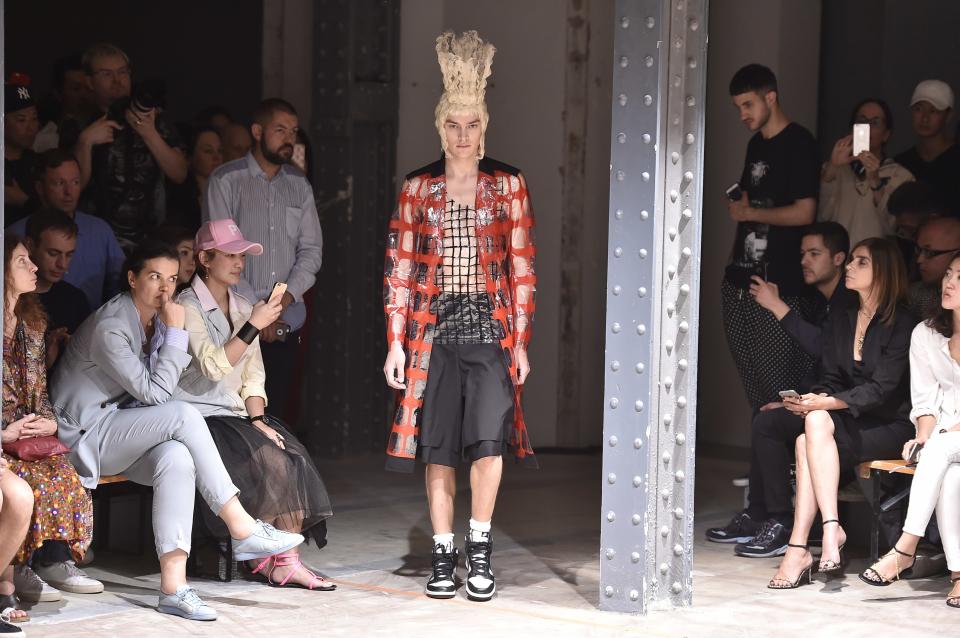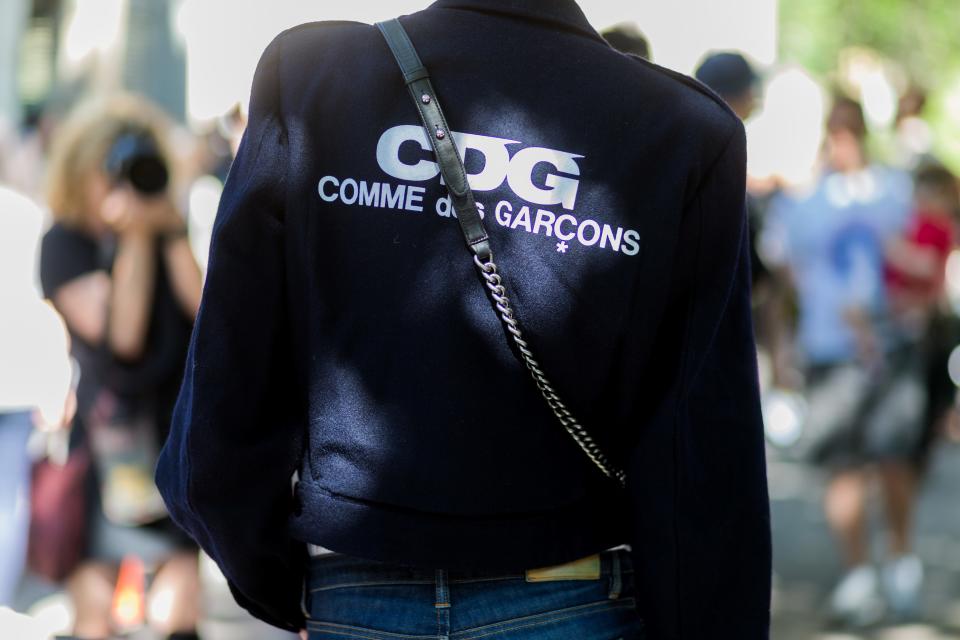What You Need to Know About Comme des Garçons Before Tonight's Met Gala
By Max Berlinger.
If you're a card-carrying member of Rei Kawakubo's Comme des Garçons universe, then you're already counting down the minutes to this year's big Metropolitan Museum of Art Costume Institute exhibit. Entitled the The Art of In-Between, the museum show—for which this year's massive Met Gala will be held—celebrates the work of the Japanese designer and her "ability to challenge conventional notions of beauty, good taste, and fashionability." Kawakubo has long been heralded as the leading voice of the avant-garde in fashion, influencing generations of designers to look at convention and throw it out the window.
RELATED: The Most Memorable Met Gala Menswear Looks of All Time
To the capital 'F' fashion-informed, Kawakubo is the ultimate renegade designer, the inventor of silhouettes and techniques that make audiences question everything they know about conventional clothes. Kawakubo is also a founder of a Comme des Garçons (or CdG as the kids call it) fashion empire that includes some of the most in-demand clothing brands and game-changing retails stores around. While her clothing might not be to everyone's taste, she's thought of as a visionary who ignores what clothes should be and instead treats the whole medium more as an artist, rather than a designer—which is why seeing her work in a museum context is so exciting to many people. She's also the first living designer since Yves Saint Laurent (in 1983) to get a monograph show. Now that's big. Here are a few reasons why everyone, us included, is pumped about the show.
Comme des Garçons Invented the Style Swerve
If you're looking for some basic 9-5 suit-and-tie menswear, CdG is not the place to start. But if you're looking for something that tests the limits of creativity—not to mention the definitions of what clothing actually is—welcome aboard. Since Kawakubo first appeared on the scene in the early 1970s, the diminutive (in size, not stature) designer has been known less for making traditionally-minded "cool" clothing as she has been for making fascinating pieces that double as wearable art. We're talking blazers with cutouts, pleated skirts, pink pajamas with pom-poms, patchwork suit jackets, see-through plastic jackets, drop-crotch trousers—anything goes when Kawakubo is designing. But strip away the runway setting, take one of those blazers out of the context of coordinating pieces, and a large swath of Comme des Garçons Homme (and the off-the-runway Homme Plus and the tailoring-centric Homme Deux) pieces are wearable in everyday life. They're swervy for sure, but not so wild that you could be confused for wearing a costume
It's Street Style Cat Nip
From crazy statement-making pieces to subtler ones with some streetwear flair, Comme des Garçons is one of street style stars' go-to labels. It's easy to see why on both accounts. On one hand, the brand specializes in items that demand your attention, while on the other, are expert riffs on familiar wardrobe must haves. Modern day style gods, including Kanye West, A$AP Rocky, Drake and Pharrell, a co-chair of this year's Costume Institute Gala, are all fans of the label. Wear any piece from the brand and you're guaranteed to get notice—for all the right reasons.
CdG Knows How to Sell, Too
Fashion is, at the end of the day, a business, and Kawakubo is as commercially savvy as she is original. While she does produce and sell her eccentric runway collections, she and husband Adrian Joffe (who serves as president of CdG) wisely created a stable of secondary labels. There's Comme des Garçons Play, which features the signature logo of a heart with two eyes, featured on everything from collaboration Converse sneakers to jaunty striped long-sleeve tees, to basic buy-them-in-bulk white T-shirts, coaches jackets and zip wallets. There's the even lower priced, but similarly-minded BLACK Comme des Garçons lineup that offers affordable essentials. There's Junya Watanabe's namesake label under the CdG umbrella as well as Ganryu, from former CdG pattern maker Fumito Ganryu. The duo even operates Gosha Rubchinskiy's business, helping the white-hot Russian designer produce and distribute his new breed of streetwear around the globe.
By creating multiple tiers of entry, almost anyone can enter the CdG universe at whatever price point or design style they're most comfortable with. "One of the most fascinating things about the house of Comme des Garçons is that it has these multitudes of collections,” Olivia Kim VP of creative projects at Nordstrom, told Racked earlier this year. “There’s no other brand right now that simultaneously has a runway collection while also having multiple in-house brands that they oversee. It’s all brilliantly structured, built like a family network where everyone is involved.” The result? The company rakes in an estimated $280 million per year.
You Have CdG to Thank for DSM
Anyone who's been to Dover Street Market, the Comme des Garçons-owned boutiques with outposts in London, Ginza, and New York, knows just how fun a shopping trip can be. The store is known for its eclectic mix of items, from in-house Comme labels featuring the most fantastical runway creations to streetwear labels like Supreme and skate brands like Palace, athletic wear like Nike, big-name brands shaping the fashion world like Gucci, Balenciaga, Prada, and Louis Vuitton, and up-and-coming labels like Phoebe English and Wales Bonner. Plus specialty pop-ups, shop-within-shop concept stores, limited-edition merch, and food and beverage. Consider it a really cool mall made for the 21st century.
The Brand's Silence Speaks Volumes
Fashion is an industry of show-offs and designers are just as much public personalities in their own right (see: Karl Lagerfeld, Tom Ford, and Michael Kors) as the A-listers they dress. Rei Kawakubo does not play by those rules. Very few published interviews with the 74-year-old designer exist, and the ones that she has conceded to taking part in are hardly revealing of her process, her inspirations, even her personality. Why? Kawakubo likes her work to speak for itself—full stop. In an age where people's every move is expressed on every platform, Kawakubo proves that silence can be the strongest statement of all.
This story originally appeared on GQ.
More from GQ:
What Women Really Think of Your Cologne
The Secrets to Perfect Sit-Ups
Kim Kardashian West's Sexy GQ Photoshoot
The Hottest Women of the 21st Century

